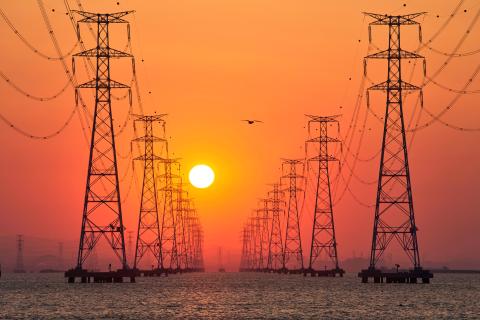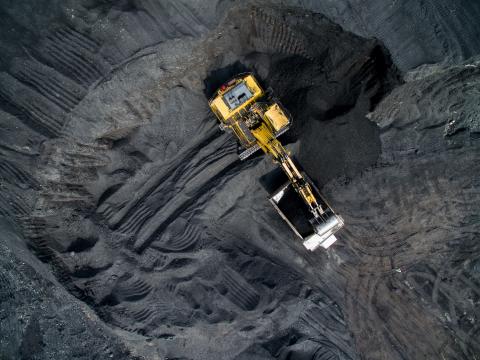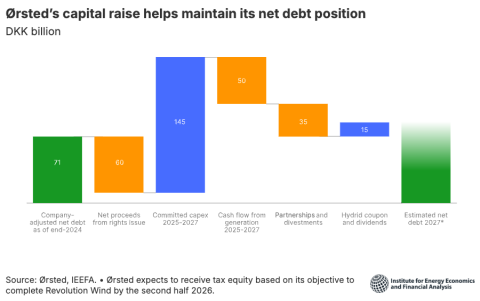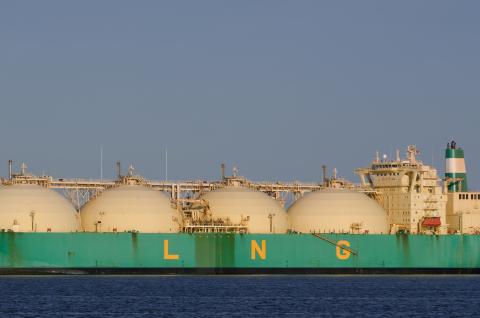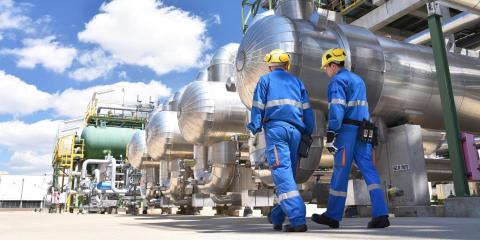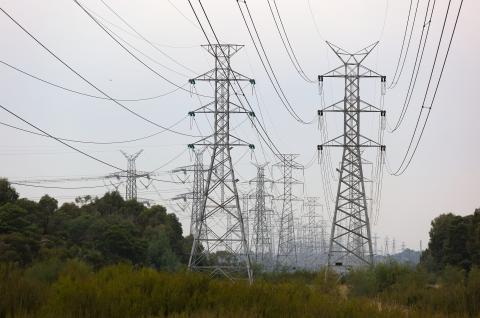IEEFA/Sightline analysis: The fracking depreciation dodge
The US oil and gas boom continued in full force during 2018. By year’s end, America’s oil and gas output reached record highs, squeezing the nation’s net petroleum imports to their lowest point since the early 1970s.
But this production frenzy came at a tremendous financial cost.
Despite the highest oil prices since 2014, fracking-focused companies spent billions of dollars more on drilling in 2018 than they gained from selling oil and gas—creating a condition known to accountants as negative free cash flow. The stock market pummeled the industry for these disappointing results, pushing the energy sector into last place on the S&P 500 for the year.
But for frackers, weak cash flows are nothing new. Since the dawn of America’s shale rush, fracking-focused companies have consistently spent more than they’ve generated. All told, a selection of shale oil and gas producers tracked by Sightline Institute and the Institute for Energy Economics and Financial Analysis (IEEFA) reported more than $200 billion in negative cash flows since 2010. A Wall Street Journal review of a different selection of oil and gas companies found $280 billion in negative cash flows from 2007 through 2017.
These losses have forced fracking companies to return to capital markets again and again, hat in hand, to keep their businesses afloat. And time after time, the industry’s enablers on Wall Street have lined up to pour money into a sector that hasn’t proved that it can repay its massive debts, let alone reward shareholders.
Which raises a critical question. Given the sector’s persistent inability to produce cash, why have investors continued to shower fracking companies with money?
One explanation can be found in the oil and gas industry’s financial statements. Despite their cash losses, many shale-focused companies tell investors that they are actually healthy, profitable enterprises.
Remember, these are not just rogue wildcat operators who are cooking their books to fool naïve investors. They’re large, publicly traded companies that comply with widely accepted accounting standards and operate under the scrutiny of the Securities and Exchange Commission (SEC).
It may sound preposterous that a company can spend more cash than it brings in, piling up massive debts in the process, while still describing itself as profitable.
Yet a close analysis shows that frackers use a variety of accounting tricks to distract investors from the fundamental weakness of their business models. Understanding how they do this requires a brief detour into the accounting concepts of capital expenditures and depreciation.
What are capital expenditures?
Fracking companies spend torrents of cash. They spend to acquire mineral rights. They spend to hire workers, rent drilling rigs and contract with oilfield services providers. They spend on fracking sand, on chemicals, well casings, piping equipment, cement and supplies. All of this cash must leave a company’s coffers before any oil or gas can start flowing from a well.
In finance-speak, these sorts of outlays typically are classified as capital expenditures, also called capex. After making a capital expenditure, a company typically owns something of lasting value—some oil or gas wells, a factory, or a piece of heavy equipment that will benefit the company for years.
Finance professionals distinguish capex from opex, the short-term operational expenditures for items such as payroll, rent, insurance and office supplies. The key difference between the two hinges on the useful life of these purchases. Opex is consumed very quickly—generally within a year—leaving behind nothing but some canceled checks. Capex, in contrast, creates assets that endure.
This difference in timing leads to a difference in accounting practices. Opex counts directly against a company’s earnings. All else being equal, higher opex means lower profits.
IN CONTRAST, CAPEX DOESN’T REALLY COUNT AS SPENDING AT ALL. It is considered an investment rather than an expense. After a company makes a capital expenditure, its accounts show a decrease in cash, but an offsetting increase in the value of its capital assets. Massive capital outlays will affect cash balances. But they will have no immediate effect on a company’s tally of profits and losses.
Depreciation: For 0il and gas, ripe for fraud
That’s not the end of the story. Capital assets gradually lose value. Think of a car: every year, wear and tear erodes a vehicle’s resale price, so that a 10-year-old vehicle is worth just a fraction of a brand new one.
Accountants call this loss of value over time depreciation. In contrast to capital expenditures, depreciation does count as an expense: all else being equal, the more depreciation a company discloses, the lower its profits. As a result, companies that want to maximize their reported profits have a clear incentive to minimize their depreciation estimates.
In the simplest cases, accountants use the straight line method to calculate depreciation. When a company buys new office furniture expected to last a decade, for example, it typically declares a depreciation expense equal to one-tenth of the furniture’s purchase price each year for 10 years. At the end of 10 years, the company’s accounts reflect that the furniture has been fully depreciated—meaning, in theory, that it is effectively without value.
For oil or gas wells, however, accountants typically use the more complicated unit-of-production method to calculate depreciation. To start, the company estimates how much given oil and gas wells will produce over a lifetime. Then, the company tracks actual production, and depreciates the value of its oil and gas wells based on their share of the total estimated lifetime output that they produce in any given period.
To make this more concrete, imagine that a company spends $8 million to drill a well, and estimates that the well will produce 1,000,000 barrels over its lifetime. In the first year, that well produces 250,000 barrels of oil, or one fourth of its total ultimate haul. So the company recognizes a depreciation expense of $2 million, or one fourth of the up-front capital expenditure. In year two, if the well produces 100,000 barrels of oil—one tenth of the ultimate production—the company takes a depreciation charge equal to one tenth of the initial capex, or $800,000. And so on.
Unit-of-production depreciation is ripe for gaming. A company that overestimates its wells’ lifetime production will likely understate its annual depreciation expenses. In the example above, imagine that the well was only half as productive as expected, and only produced 500,000 barrels over its lifetime. Year after year, the depreciation expense recorded on the company’s books will be half as large as it should have been.
Eventually, after enough years of production shortfalls, the company’s accountants may have no choice but to recognize that its wells aren’t as productive as they anticipated. This could force them to write off some of the wells’ value, and to take a charge against their earnings. (The subject of write-offs deserves a separate article.) But in the meantime, a company that overestimates its wells’ productivity can keep its depreciation expenses artificially low for years—making it seem more profitable than it actually is.
As a recent Wall Street Journal article documented, oil and gas companies use a variety of tricks to inflate their production forecasts for their oil fields. They cherry-pick data from a few good wells. They extrapolate from highly productive sweet spots and apply them to an entire oil field. They underestimate the pace at which oil production declines over time. These maneuvers, and similar ones, have boosted the industry’s reported oil and gas reserves, inflating investors’ expectations for long-term profits. At the same time, inflated reserve estimates have allowed companies to claim lower depreciation costs and, therefore, higher profits.
Sorting out the accounting shenanigans for any particular company would require a team of forensic accountants with complete access to detailed production data. Yet the big picture seems quite clear: fracking-focused companies are playing games with reserve estimates and depreciation expenses. And these deceptive practices have allowed fracking companies to hide their biggest secret in plain sight: over the long haul, America’s fracking boom is almost certainly a complete financial bust.
Kathy Hipple ([email protected]) is a financial analyst at IEEFA.
Clark Williams-Derry ([email protected]) is director of energy finance at Sightline Institute
RELATED ITEMS:
IEEFA: Red Flags on U.S. Fracking Disappointing Financial Performance Continues
IEEFA: More Red Flags on Fracking: Weak Third-Quarter Results
IEEFA: West Virginia shale development falls short of economic promise



